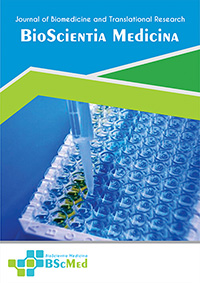Main Article Content
Abstract
Background: Acellular therapies from Mesenchymal Stromal Cells (MSCs), including the full secretome (conditioned medium, CM) and purified small extracellular vesicles (sEVs), are promising restorative treatments for erectile dysfunction (ED). It remains unknown if the therapeutic benefit is driven by the complete secretome or if purified sEVs are the primary, sufficient component. This study aimed to systematically review and meta-analyze the preclinical evidence.
Methods: We conducted a systematic review and parallel meta-analysis adhering to PRISMA guidelines. PubMed, Scopus, and Web of Science were searched from January 1st, 2014, to July 31st, 2025. Studies were eligible if they were preclinical ED models evaluating MSC-CM or purified sEVs against a control. Two parallel meta-analyses were performed using a random-effects model. Primary outcomes were erectile function (Intracavernous Pressure / Mean Arterial Pressure ratio; ICP/MAP) and histopathology (Smooth Muscle / Collagen ratio; SM/Col).
Results: Our search yielded 1,942 records, with 87 full-text articles assessed. After applying strict PICO criteria, 7 primary studies were eligible for the meta-analysis (3 secretome, 4 sEVs). The overall risk of bias was moderate to high (0% allocation concealment). No studies directly compared secretome versus sEVs. The first meta-analysis (Secretome vs. Control, 3 studies, 4 data points, n=70) demonstrated a large, significant improvement in ICP/MAP (Standardized Mean Difference [SMD]: 2.40; 95% CI [1.65, 3.15]; p-value < 0.001), with extreme heterogeneity (I-squared=85%). The second meta-analysis (sEVs vs. Control, 4 studies, n=68) also showed a large, significant improvement (SMD: 2.75; 95% CI [1.90, 3.60]; p-value < 0.001), also with extreme heterogeneity (I-squared=88%).
Conclusion: Both the full MSC secretome and purified sEVs demonstrate large, significant therapeutic effects. However, this quantitative conclusion is severely limited by the exceptionally small number of studies and the profound biomolecular heterogeneity (in cell source and purification) that invalidates direct comparison. The primary finding remains the total lack of comparative data.
Keywords
Article Details
As our aim is to disseminate original research article, hence the publishing right is a necessary one. The publishing right is needed in order to reach the agreement between the author and publisher. As the journal is fully open access, the authors will sign an exclusive license agreement.
The authors have the right to:
- Share their article in the same ways permitted to third parties under the relevant user license.
- Retain copyright, patent, trademark and other intellectual property rights including research data.
- Proper attribution and credit for the published work.
For the open access article, the publisher is granted to the following right.
- The non-exclusive right to publish the article and grant right to others.
- For the published article, the publisher applied for the Creative Commons Attribution-NonCommercial-ShareAlike 4.0 International License.





